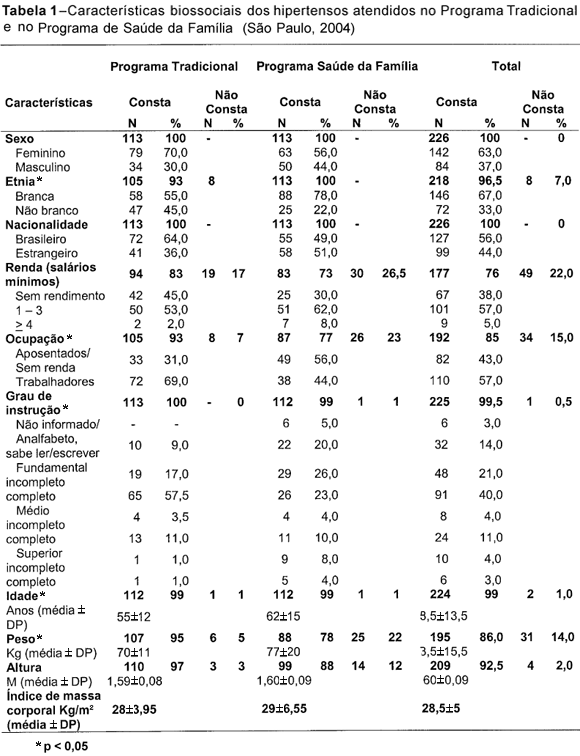OBJECTIVE: The study compared two groups of hypertensive patients: one attended by the traditional process of basic health unit care and the other one followed by the Family Health Program (FHP). METHOD: 113 records of hypertensive patients attended by the traditional process basic heath unit care and 113 by the FHP RESULTS: The results showed that hypertensive patients from FHP were different (p<0.05) in relation to the others on the predominance of the white race; lower education level; fewer workers; older age and higher weight; more tobacco users; less alcoholic beverage, less physical activity, and longer time of hypertension. The patients from FHP had more nursing appointments, nursing home visit, medical home visit, and participation in specific groups; however, there were fewer medical appointments and more attendance at the emergence room. The patients at FHP presented a significant reduction in the blood pressure (152 ± 24/92±15 vs 142 ± 21/85±13 mm Hg) from the beginning to the end of the period of the study with initial systolic blood pressure higher than the patients from the traditional program. CONCLUSION: Only 30% of the patients from the traditional program and 20% from FHP had their blood pressure controlled.
Hypertension; Family Health Program





